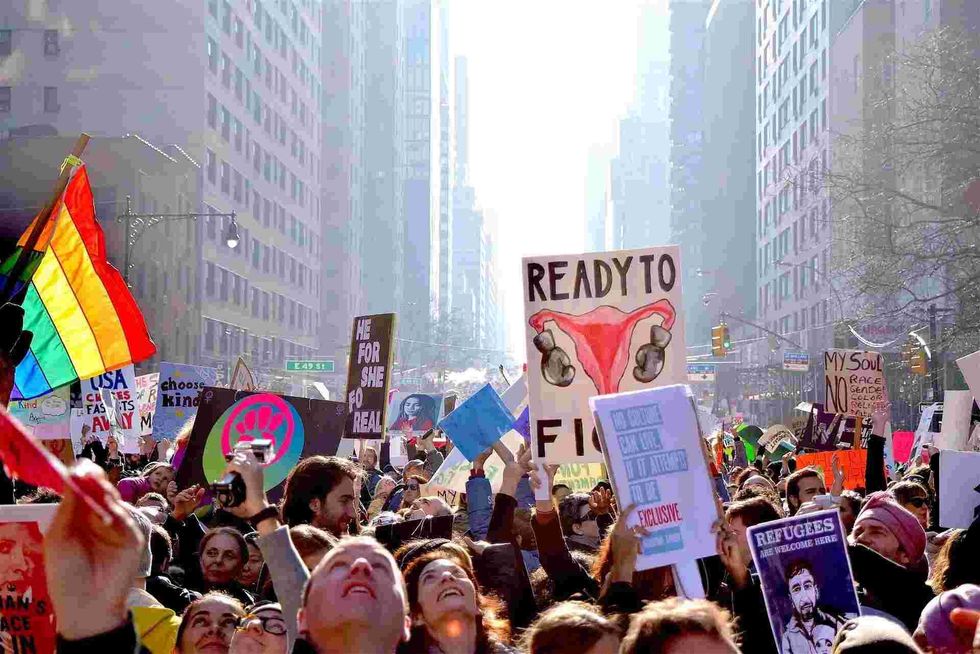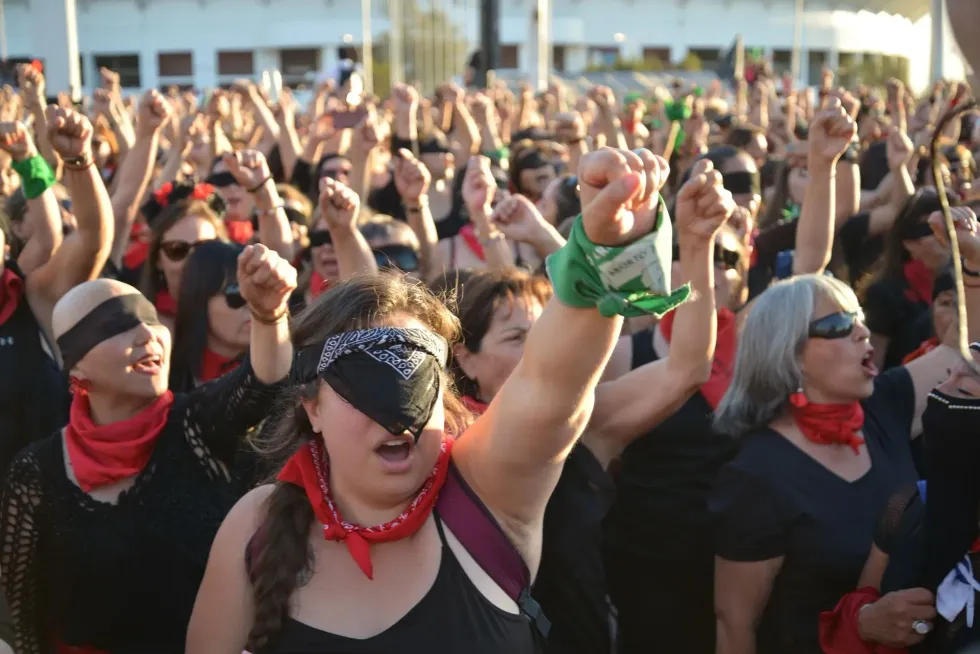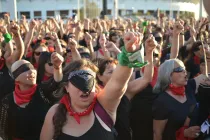Here Are 123 Women's March Facts That You Need To Know

The Women's March, one of many women's marches, was a worldwide demonstration that took place the day after Donald Trump was sworn in as President of the United States, on January 21, 2017.
Several of Trump's words have been interpreted as anti-women or otherwise disrespectful to women, prompting the protest. It was the country's largest single-day protest led by women on record.
The annual marches aim to promote human rights and other issues, such as women's rights, healthcare reform, immigration reform, disability justice, the environment, reproductive rights, LGBTQ rights, freedom of religion, racial equality, workers' rights, and tolerance through legislation and policies.
According to organizers, the purpose was to send a strong statement to the new administration on Trump's first day in office, and to the rest of the world, that women's rights are human rights.
The primary demonstration, known as the Women's March on Washington, took place in Washington, D.C., with numerous more marches taking place throughout the world. The March For Life in Washington was broadcast live on YouTube, Facebook, and Twitter.
More than 470,000 people attended the Washington March. In the United States, between 3,267,134 and 5,246,670 individuals marched, accounting for about 1-1.6% of the population.
More than seven million people participated globally. At least 408 marches were reported in the United States, with another 168 in 81 other countries. In addition, organizers said that 673 marches were held around the world on all seven continents, including 29 marches in Canada, 20 marches in Mexico, and one march in Antarctica.
If you liked reading these facts on women's marches, then find out more about the movement by reading about the history, their mission and principles, as well as some more interesting facts.
History Of The Women's March
The first recorded Women's March was in 1913, with the Woman Suffrage Parade. With such rich history behind these women's marches, let's find out more.
Lawyer Inez Milholland, dressed in a white cape and riding a white horse, led thousands of women in a march down Pennsylvania Avenue in the nation's capital on Monday, March 3, 1913. Nine bands, four mounted brigades, three heralds, roughly 24 floats, and about 5,000 marchers formed a long line behind her.
In the first leg of the 1913 march, women from countries that had enfranchised women took center stage. There followed the pioneers, who had been fighting for women's ability to vote for decades.
In March 1917, in Petrograd, Russia, thousands of women marched to commemorate International Women's Day and protest bread shortages in what became known as the February Revolution. Strikers and other workers joined these protests.
Around 20,000 women marched on the Union Buildings in Pretoria, South Africa, on August 9, 1956, to oppose planned modifications to the Urban Areas Act. Women from all around South Africa came to Pretoria, with some coming from as far as Cape Town and Port Elizabeth. They then marched in a determined yet organized fashion to the Union Buildings.
Organizers included many African women of color, who wore traditional attire; others wore the colors of the Congress, green, black, and gold; while Indian women who attended wore white saris. Many women were carrying babies on their backs, and some domestic staff brought the children of their white employers with them.
Throughout the march, the large crowd maintained a remarkable level of discipline and decorum.
Anti-discrimination laws were at the heart of the feminist movement in the '60s and '70s, called the Women's Liberation Movement, which aimed to eliminate workplace inequality, such as denying access to promotion and wage disparities, which is known as the glass ceiling.
Representative Howard Smith of Virginia proposed in 1964 that the Civil Rights Act be amended to include a restriction on gender discrimination.
The other congressmen laughed at him, but the measure passed with the amendment intact thanks to Democrat representative Martha Griffiths.
She was a leader in the Women's Lib movement and the first woman from Michigan to be elected to the United States Congress. 'The Guardian' described her as 'the mother of the equal rights amendment'.
Teresa Shook, of Hawaii, created a Facebook event and invited friends to march on Washington in protest on November 9, 2016, on the first day after Donald Trump was elected president of the United States at the White House, in response to Trump's election campaign and political views, as well as his defeat of presidential nominee Hillary Clinton.
Thousands of women signed up to march for the Women's March when Evvie Harmon, Bob Bland (a popular New York high-fashion designer), Breanne Butler, Fontaine Pearson, and others launched their Facebook sites. Harmon, Butler, and Pearson agreed to join forces and merge their pages, launching the official Women's March on Washington.
Women's March organizers included Vanessa Wruble, co-founder and co-president of the Women's March on Washington, who acted as Head of Campaign Operations and brought on Carmen Perez, Tamika D. Mallory, and Linda Sarsour to serve as the national co-chairs along with Bland to guarantee that the Women's March was led by diverse women of color, with a good representation of local communities and backgrounds.
Janaye Ingram, a former Miss New Jersey USA, was in charge of Women's March logistics. Paola Mendoza, a film-maker, acted as artistic director and national organizer.
For the Women's March on Washington, many marchers wore pink apparel and the march's unofficial uniform: pink-knit hats with cat-like ears on top, called 'pussyhats', in reference to Trump's sexist, offensive blunder in the 2005 recording.
On the same day, millions more people marched in sister marches around the United States and more than 30 nations across the world, from Antarctica to Zimbabwe.
According to latest estimates gathered by the Washington Post, approximately 4.1 million people attended various Women's Marches across the United States.
The Mission of Women's Marches
Did you enjoy reading about the history of women's marches? Let's now look at why the Women's March was established and why it has been such a worldwide success.
The first Women's March took place in response to the 2016 presidential election to send a bold message to Trump about women's rights. On January 21, 2017, the day after President Trump's inauguration day, the inaugural Women's March took place.
The primary mission of the Women's March is to utilize the political power and influence of diverse women and their diverse local communities to bring about positive social change.
Today, through outreach programs, training, and events, the Women's March is a women-led movement that provides education on a diverse range of topics, and provides entry points for organizers and new grassroots activists to engage and participate in their local communities.
The Women's March is dedicated to bringing down oppressive systems via peaceful resistance and the creation of inclusive structures based on self-determination, dignity, and respect.

Women's March Principals
Have you enjoyed reading facts about women's marches? Read on to find out more about their principals of equal rights.
The Women's March on Washington brought together a broad and diverse group of leaders to create the Unity Principles, an intersectional platform. The Unity Principles are a guiding light for the Women's March movement, representing a fresh awareness of the interconnected nature of the struggles and a vision of collective emancipation.
The Women's March movement believes women's rights are human rights, and human rights are women's rights.
It states that we must all create a society in which women, including black women, indigenous women, poor women, immigrants, disabled women, white women, Jewish women, Muslim women, Latina women, Asian and Pacific Islander women, lesbian, bi, queer, and transwomen, are free and able to care for and nurture their families, in safe and healthy environments free of structural impediments.
The diverse range of principals of the Women's March movement include:
Ending Violence: Women have the human right to a full and healthy life free of all types of violence against their bodies. The Women's March organizers believe in holding police officers accountable and seeking justice in incidents of police brutality, stopping racial profiling and targeting of people of color.
Dismantling the criminal justice system's gender and racial disparities is a moral responsibility.
LGBTQIA Rights: The Women's March movement declares unequivocally that LGBTQIA rights are human rights and that it is our responsibility to raise, expand, and safeguard and ensure social justice, public safety, and the health care of our gay, lesbian, bisexual, queer, transgender, and gender-non-conforming brothers, sisters, and siblings.
Everyone should be free to regulate their bodies and be free of gender stereotypes, racial inequities, assumptions, and expectations.
Reproductive Rights: The movement rejects any federal, state, or municipal limits on people's capacity to obtain adequate reproductive healthcare, on their reproductive freedom, birth control, medically accurate sex education, or HIV/AIDS care and prevention. This implies that everyone, regardless of poverty, region, or education, has access to safe, legal, and inexpensive abortion and birth control.
Workers' Rights: Transparency, accountability, security, and equity must be the foundations of the economy. All women should be compensated fairly and have access to affordable daycare, sick days, healthcare, paid family leave, and healthy workplaces. Domestic and farm employees and undocumented and migratory workers must be able to organize and fight for a living minimum wage.
Civil Rights: The movement states that voting rights, freedom of speech, freedom to worship without fear of intimidation or harassment, and protections for all citizens, regardless of race, gender, age, or handicap, are each citizen's birthright. The movement states that an all-inclusive Equal Rights Amendment to the United States Constitution is long overdue.
Immigrant Rights: The movement promotes the belief in refugee and immigrant rights, regardless of status or place of origin, because of the promise of America's appeal as a land of opportunity. They say that migration is a human right and that no-one is an outcast.
Disability Rights: The movement believes that all women's issues are challenges faced by women with disabilities and deaf women.
As moms, sisters, daughters, and contributing citizens, people must work to remove barriers to access, inclusion, independence, and full citizenship enjoyment at home and abroad, so everyone can be fully integrated into all parts of American life, business, and culture and contribute to them.
Environmental Justice: Everyone, including individuals and communities, has a right to clean water, clean air, and access to and enjoyment of public land, and that the environment and climate must be safeguarded. Land and natural resources cannot be exploited for corporate profit or greed, especially when public safety and health are put in danger.
Interesting Women's March Facts
The Women's March movement is important to the history of the United States. Here are some fascinating facts that we have compiled for you:
DThe number of organized events across the United States (in all 50 states) was around 400 for the first Women's March.
Do you want to be a part of the movement, but you cannot make it to Washington? A number of sister marches will take place throughout the world on the same day as the Women's March on Washington this year, for the Global Women's March 2022.
Join or sponsor a sister march near you if you can't make it to Washington, D.C. on January 21 this year. There are 616 companion marches scheduled, with an estimated 1,364,010 marchers expected to attend this year.
Following the Women's March in Washington, D.C., organizations such as EMILY's List and Planned Parenthood hosted workshops to encourage women to get involved in politics, including running for office.
Each of the Chicago March's blocks was dedicated to a different progressive subject, such as gun-violence prevention, health care, climate change, the 2020 census, and voter registration. For example, the health care block was to be led by Planned Parenthood and Healthy Illinois, who rallied the crowd in support of health care as a human right.
Planned Parenthood co-sponsored the Women's March at Chicago.
Despite the fact that many women of color marched, including those interviewed by PerryUndem, many indicated they felt marginalized by white women, attendees, and organizers. For example, S.T.
Holloway, a black attorney and writer, attended the 2017 march in Los Angeles and later wrote on HuffPost that the first and last time she heard 'Black Lives Matter' chanted was when she and her two pals started it.
According to estimates compiled by 'The Washington Post', approximately 4.1 million people participated in various Women's Marches across the United States, with an additional 300,000 taking part globally.
Around 400,000 people marched along Fifth Avenue in New York City, while in Chicago, the crowd became so enormous (more than 150,000) that organizers called off the march and held a rally in Grant Park instead.
According to reports, the largest demonstration in the country took place in Los Angeles.
The Women's March on Washington was said to have seen an attendance of more than 470,000 people in Washington alone, which was three times more than President Trump's inauguration.
The Women's March spanned seven continents, including Antarctica.
We hope you learned a lot about the rich history, mission, principles, and other fun facts about the Women's Marches. If you're passionate about the cause, why not enrolling in the movement and take part?
We Want Your Photos!
More for You
Doctorate specializing in Veterinary Medicine

Oluniyi AkandeDoctorate specializing in Veterinary Medicine
With an accomplished background as a Veterinarian, SEO content writer, and public speaker, Oluniyi brings a wealth of skills and experience to his work. Holding a Doctor of Veterinary Medicine degree from the University of Ibadan, he provides exceptional consulting services to pet owners, animal farms, and agricultural establishments. Oluniyi's impressive writing career spans over five years, during which he has produced over 5000 high-quality short- and long-form pieces of content. His versatility shines through as he tackles a diverse array of topics, including pets, real estate, sports, games, technology, landscaping, healthcare, cosmetics, personal loans, debt management, construction, and agriculture.
Disclaimer
1) Kidadl is independent and to make our service free to you the reader we are supported by advertising. We hope you love our recommendations for products and services! What we suggest is selected independently by the Kidadl team. If you purchase using the Buy Now button we may earn a small commission. This does not influence our choices. Prices are correct and items are available at the time the article was published but we cannot guarantee that on the time of reading. Please note that Kidadl is a participant in the Amazon Services LLC Associates Program, an affiliate advertising program designed to provide a means for sites to earn advertising fees by advertising and linking to Amazon. We also link to other websites, but are not responsible for their content.
2) At Kidadl, we strive to recommend the very best activities and events. We will always aim to give you accurate information at the date of publication - however, information does change, so it’s important you do your own research, double-check and make the decision that is right for your family. We recognise that not all activities and ideas are appropriate for all children and families or in all circumstances. Our recommended activities are based on age but these are a guide. We recommend that these ideas are used as inspiration, that ideas are undertaken with appropriate adult supervision, and that each adult uses their own discretion and knowledge of their children to consider the safety and suitability. Kidadl cannot accept liability for the execution of these ideas, and parental supervision is advised at all times, as safety is paramount. Anyone using the information provided by Kidadl does so at their own risk and we can not accept liability if things go wrong.
3) Because we are an educational resource, we have quotes and facts about a range of historical and modern figures. We do not endorse the actions of or rhetoric of all the people included in these collections, but we think they are important for growing minds to learn about under the guidance of parents or guardians.







